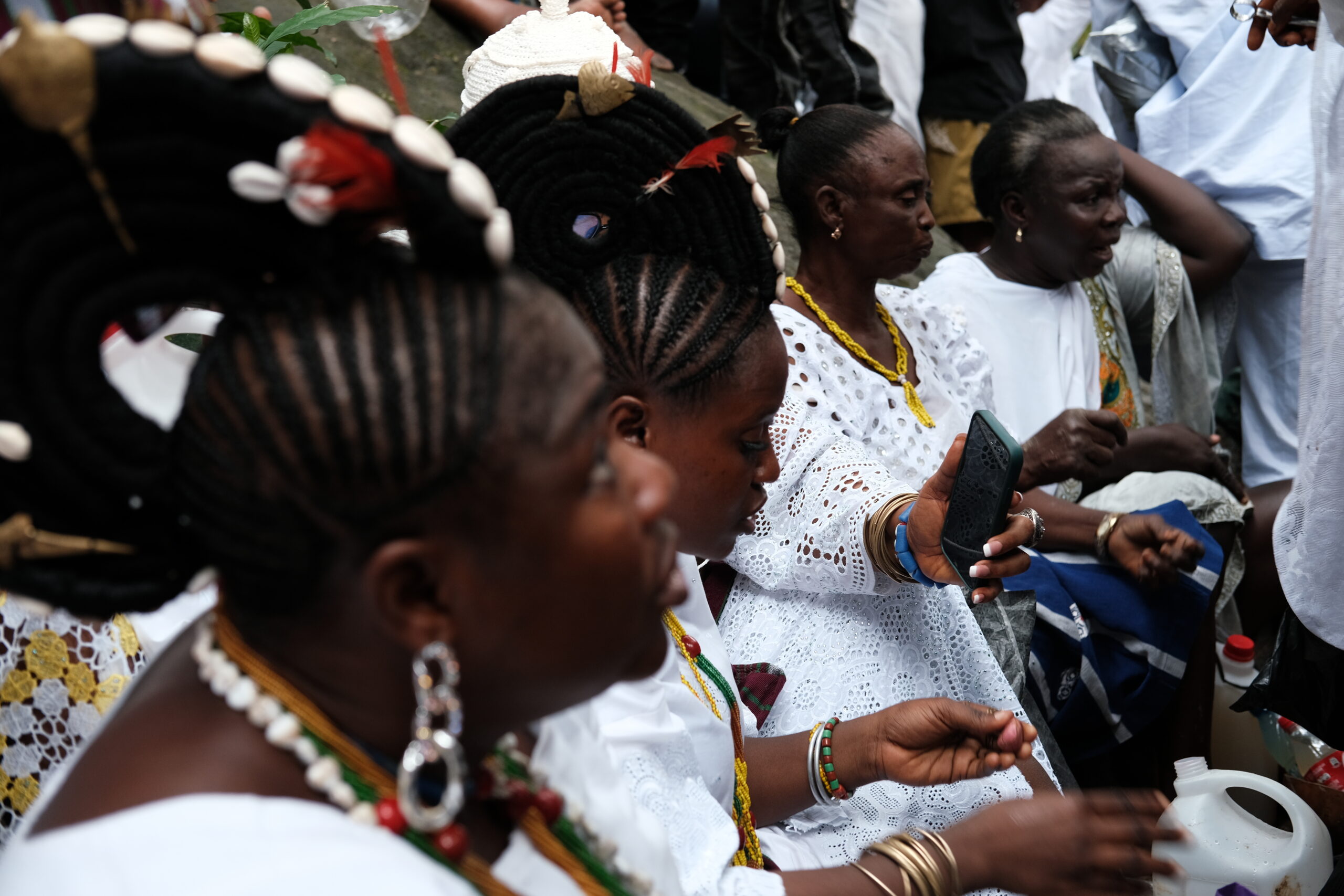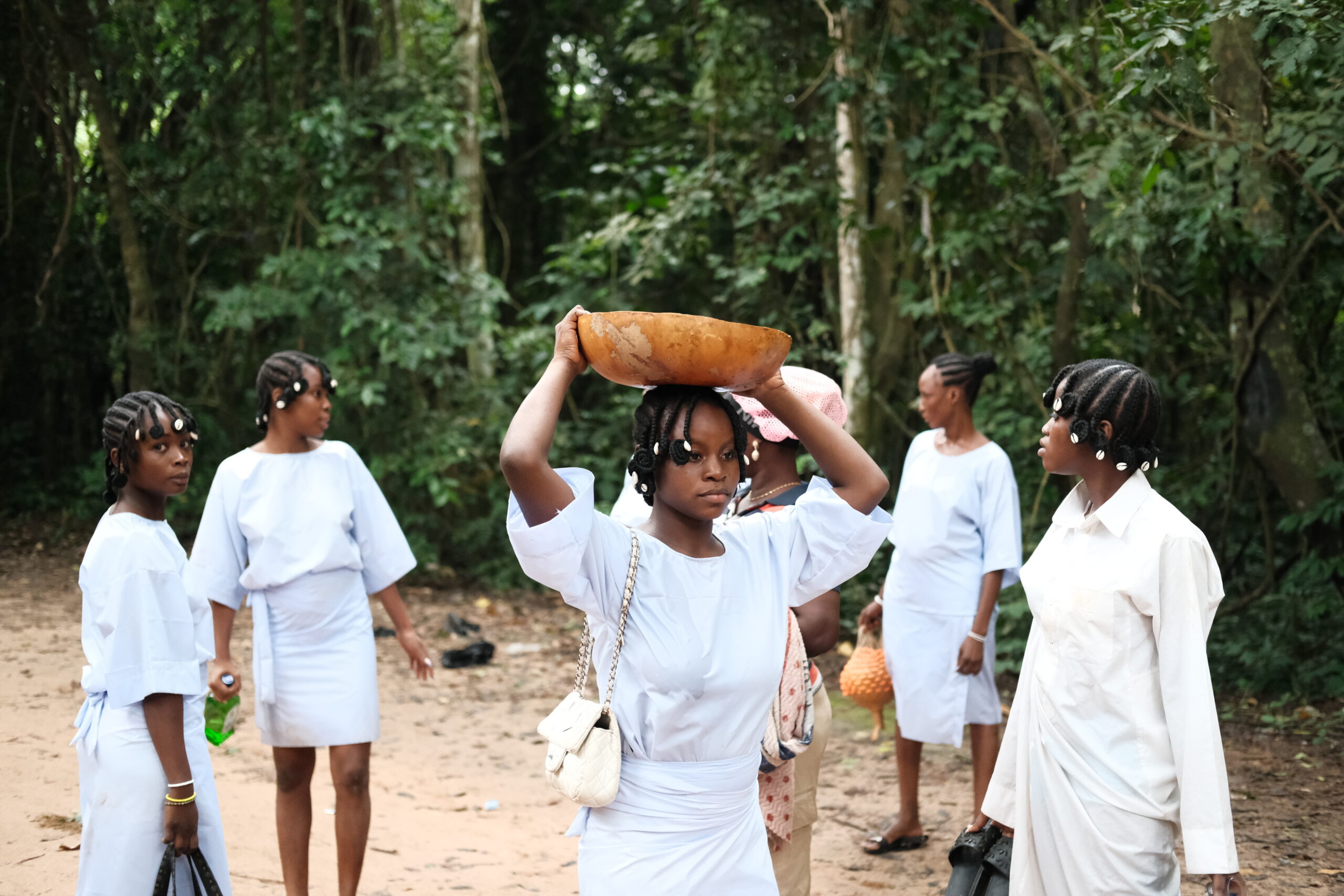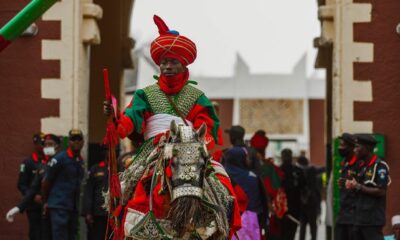Features
A Journalist’s First Experience of the Osun-Osogbo Festival

Photo Credit: Pelumi Salako
On the 5th of August, Pelumi Salako arrived in Osogbo to witness and cover the Osun-Osogbo festival for the first time as a documentary photographer. Although several events and rites precede, the festival annually reaches its climax on the 8th of August, when thousands of people gather inside the Osun-Osogbo sacred grove, an ancestral forest along the bank of the Osun River, as priests and priestesses offer rites and sacrifices to Osun, the river goddess. While this is often the major attraction of the festival because it features the procession of the Arugba, the celebration of the river goddess and other sacrifices, the festival is preceded by other events like “Ojo Ifa,” “Iwopopo,” “Ibo Ade”, and others.
As early as 6 in the morning, Pelumi and his co-explorers arrived at the palace of the Ataoja of Osogbo, the king of Osogbo, to witness the procession of the Arugba, the virgin maiden who carries a sacred calabash on her head, from a temple in the palace to the grove. “Getting into the grove was a struggle. It was a mammoth crowd. To move, you have to push someone,” Salako told me.

Photo Credit: Pelumi Salako
Every year, the festival attracts thousands of attendees from all over the world. It is rooted in centuries-old traditions, and is believed to date back to the pact between the goddess Osun and the founders of Osogbo, a covenant of protection and fertility that has been renewed year after year through rituals and sacrifice. Beyond its cultural relevance and spirituality, the festival and the grove are a living archive of Yoruba history, a gathering that sustains communal memory and reasserts the place of indigenous religion in contemporary Nigeria. Despite the high percentages of Muslims and Christians in the country, there has been a recent appreciation for traditional and indigenous festivals.
It was revealing for Pelumi to witness the many events surrounding the festival. He had read and heard stories about the festival, but nothing prepared him for what he saw. “I witnessed a moment when a priestess was performing a rite for a baby. She took a chicken and snapped its head, and immediately spilt the blood. It was scarily exciting. I also saw some devotees fall into a trance.”
A day before Pelumi arrived in Osogbo, the procession for “Ina Oloju Merindinlogun”, a 16-head lamp, had held. It was a night event held at the king’s palace, and it involved the spiritual circumambulation around the lamp. But the photography group he went with showed him the pictures of the process. “I wanted to see what that was like in person because a priest I spoke to told me the lamp was gotten from an ebora, a spirit, and it became part of the festival rite. I wanted to see the traditional rites around and how beautiful it looked in the photos I saw. I was gutted to have missed it.”

Photo Credit: Pelumi Salako
He, however, witnessed a strange moment during the festival. Historically, the Arugba has always been a virgin maiden. This year, the Arugba was 9 years old. As she made her procession from the palace to the grove, she couldn’t carry the sacred calabash further, so a man helped her. “It was like a tradition-bending occurrence. Everyone around was surprised because we thought the Igba (calabash) was a sacred thing, only to be carried by a virgin maiden.”
I asked Pelumi what he thinks has sustained the festival for many years. He said, “When you get to the Osun-Osogbo festival, especially at the grove, you’d understand that there is a presence. It’s not a regular celebration, but a spiritual festival, and there are thousands of devotees. From what I saw, the festival is a religion. Although there are aspects of other things, like fashion and music, at the festival, spirituality takes centre place, and this is why people still flock in.”
Despite some illness pulling him back, Pelumi left Osogbo with more than photographs. The Osun-Osogbo festival remains a point of pride for the Yoruba people and a global attraction, where the grove is now protected as a UNESCO World Heritage site since 2005.





















